How to Manage Invasive Species in Your Forest
- September 11, 2024
- 0 comment
Manage Invasive species pose a significant threat to forests worldwide, disrupting ecosystems, displacing native species, and causing economic and environmental damage.

Effective manage of invasive species in your forest requires a combination of proactive monitoring, swift action, and sustainable practices. This guide offers a detailed approach to manage invasive species in your forest, ensuring that your land remains healthy, biodiverse, and resilient.
Table of Content
- Understanding Manage Invasive Species
- Identifying Invasive Species in Your Forest
- Prevention Strategies
- Eradication and Control Methods
- Monitoring and Maintenance
- Collaborative Efforts and Community Involvement
- Legal and Regulatory Considerations
- Economic and Ecological Impact of Invasive Species
- Case Studies of Successful Invasive Species Management
- Challenges and Future Directions
Understanding Manage Invasive Species
Manage Invasive species are non-native organisms that spread rapidly and cause harm to the environment, economy, or human health. They often arrive in new areas through human activity, such as international trade, travel, or transportation of goods. Once established, they can outcompete native species for resources, alter habitats, and disrupt ecological processes.
Identifying Invasive Species in Your Forest
The first step in manage invasive species is identifying them. Accurate identification is crucial for implementing effective control measures.
Steps to Identify Invasive Species:

- Conduct a Survey: Regularly monitor your forest to detect any unusual or rapidly spreading species.
- Use Field Guides: Utilize field guides or mobile apps designed to help identify invasive species.
- Consult Local Experts: Engage with local forestry agencies, extension services, or environmental organizations for expert advice.
- Monitor Indicator Species: Some native species can serve as indicators of invasive species presence. For instance, a decline in certain native plants might indicate competition from invasive plants.
Prevention Strategies
Preventing the introduction of invasive species is the most cost-effective and environmentally sound approach to management.
Prevention Methods:

- Education and Awareness: Educate forest users and nearby communities about the risks of invasive species and how to prevent their spread.
- Regulate Movement: Implement regulations to control the movement of firewood, plants, soil, and other materials that may harbor invasive species.
- Use Native Plants: When planting in or around your forest, use native species instead of non-native plants that could become invasive.
- Early Detection and Rapid Response (EDRR): Establish an EDRR plan to quickly identify and eliminate invasive species before they become established.
Eradication and Control Methods
Once an invasive species is established, eradication and control become more challenging but still achievable with the right approach.
Physical Control
Manual Removal
Hand-pulling, cutting, or mowing invasive plants can be effective for small infestations. Ensure complete removal of roots to prevent regrowth.

Mechanical Removal
Use machinery for larger infestations, such as bulldozers or brush cutters. This method is effective but can also disturb the soil, potentially leading to erosion or new invasions.

Controlled Burns
Prescribed fires can help manage invasive plants by reducing seed banks and eliminating young seedlings. However, this method requires careful planning and should only be conducted by trained professionals.

Chemical Control
Herbicides
Selective herbicides can be used to target specific invasive plants. It’s essential to follow label instructions carefully to minimize harm to non-target species and the environment.
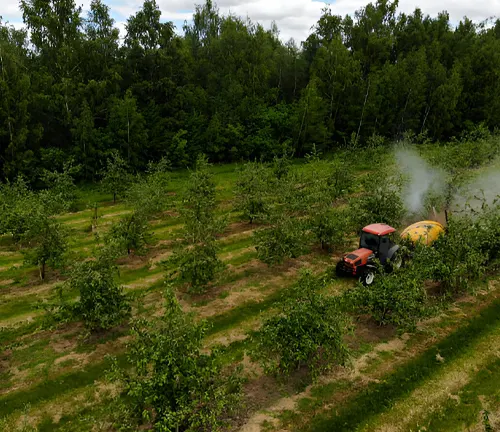
Pesticides
For invasive insects or other animals, pesticides may be necessary. Again, careful application is critical to avoid harming native species or contaminating water sources.

Monitoring and Maintenance
Long-term monitoring and maintenance are crucial for the success of invasive species management efforts. Even after initial control measures, invasive species can return if not regularly monitored.
Monitoring Techniques:
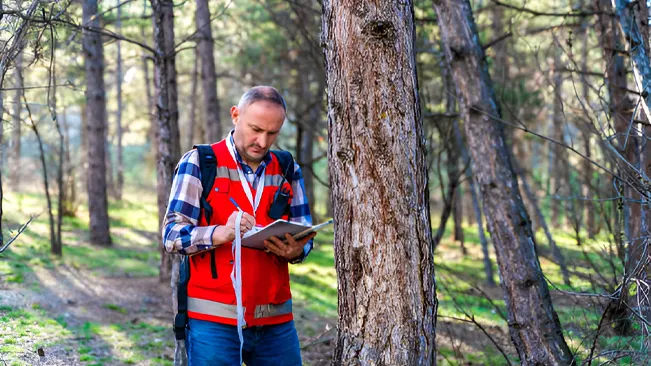
- Regular Inspections: Conduct periodic inspections of your forest to detect any resurgence of invasive species.
- Photographic Records: Use photographs to document changes in vegetation over time, which can help track the effectiveness of management efforts.
- Permanent Plots: Establish permanent monitoring plots where you can regularly assess plant and animal communities.
Maintenance Activities:

- Restoration of Native Species: After removing invasive species, restore the area with native plants to prevent reinvasion and improve ecosystem health.
- Re-application of Control Measures: Some invasive species may require repeated treatments, such as additional herbicide applications or mechanical removal.
- Community Involvement: Engage local communities in monitoring and maintaining invasive species management efforts, fostering a sense of stewardship.
Collaborative Efforts and Community Involvement
Manage invasive species in your forest often requires collaboration with neighboring landowners, local communities, and government agencies. Working together can increase the effectiveness of your efforts and ensure long-term success.
Collaborative Strategies:
- Forming Partnerships: Partner with local environmental organizations, government agencies, and other landowners to coordinate invasive species management efforts.
- Community Education Programs: Develop educational programs to inform the public about the importance of invasive species management and how they can contribute.
- Volunteer Programs: Organize volunteer events, such as invasive species removal days or tree planting activities, to engage the community and build support for your efforts.
Legal and Regulatory Considerations
Understanding the legal and regulatory framework for invasive species management is essential. Different regions may have specific laws and regulations regarding the control and eradication of invasive species.
Key Considerations:
- Permits and Approvals: Some control methods, such as the use of herbicides or prescribed burns, may require permits or approvals from local or state authorities.
- Compliance with Environmental Laws: Ensure that your management activities comply with environmental protection laws, such as those protecting endangered species or water quality.
- Reporting Requirements: Some regions require landowners to report the presence of certain invasive species to authorities. Be aware of any reporting obligations in your area.
Economic and Ecological Impact of Invasive Species
Invasive species can have significant economic and ecological impacts on forests. Understanding these impacts can help prioritize management efforts and justify the resources needed for control.
Economic Impacts:
- Timber Loss: Invasive species can reduce timber quality and quantity, leading to financial losses for forest owners.
- Increased Management Costs: The cost of controlling invasive species can be substantial, including labor, equipment, and materials.
- Reduced Recreational Value: Invasive species can diminish the aesthetic and recreational value of forests, affecting tourism and property values.
Ecological Impacts:
- Biodiversity Loss: Invasive species often outcompete native species, leading to a decline in biodiversity.
- Habitat Degradation: They can alter habitats, making them unsuitable for native wildlife.
- Disruption of Ecosystem Services: Invasive species can disrupt essential ecosystem services, such as water purification, carbon storage, and soil stabilization.
Collaborative Efforts and Community Involvement
Manage invasive species in your forest often requires collaboration with neighboring landowners, local communities, and government agencies. Working together can increase the effectiveness of your efforts and ensure long-term success.
Collaborative Strategies:
- Forming Partnerships: Partner with local environmental organizations, government agencies, and other landowners to coordinate manage invasive species efforts.
- Community Education Programs: Develop educational programs to inform the public about the importance of manage invasive species and how they can contribute.
- Volunteer Programs: Organize volunteer events, such as manage invasive species removal days or tree planting activities, to engage the community and build support for your efforts.
Case Studies of Successful Invasive Species Management
Examining case studies of successful invasive species management can provide valuable insights and inspiration for your efforts.
Example 1: Tamarisk Removal in the Southwestern United States
The tamarisk, an invasive shrub, has taken over large areas of riparian habitats in the southwestern United States. Through a combination of mechanical removal, herbicide application, and biological control using a beetle species that feeds on tamarisk, significant progress has been made in restoring these habitats.
Example 2: Purple Loosestrife Control in Wetlands
Purple loosestrife, a highly invasive plant, has threatened wetlands across North America. A successful management strategy involved the release of Galerucella beetles, which specifically target purple loosestrife. This biological control method, combined with public education and manual removal, has significantly reduced the plant’s spread.
Challenges and Future Directions
Manage invasive species is a complex and ongoing challenge. As global trade and travel continue to increase, the risk of new invasive species introductions also rises.
Future Directions:
- Improved Early Detection: Advancements in technology, such as remote sensing and DNA barcoding, can enhance early detection efforts.
- Research and Development: Continued research is needed to develop more effective and environmentally friendly control methods.
- Policy and Legislation: Strengthening policies and legislation at local, national, and international levels can help prevent the introduction and spread of invasive species.
Conclusion
Effective manage invasive species in your forest requires a comprehensive approach that includes prevention, identification, control, restoration, and ongoing monitoring. By understanding the characteristics of invasive species, implementing appropriate control measures, and engaging in collaborative efforts, you can protect your forest’s health and biodiversity for generations to come.
Frequently Asked Questions (FAQ)
- What are the first steps to take if I discover an invasive species in my forest?
Begin by correctly identifying the species. Document its location, and assess the extent of the invasion. Contact local environmental or forestry authorities for guidance on appropriate control measures. - Can I manage invasive species on my own, or do I need professional help?
While small infestations can often be managed by landowners, larger or more complex situations may require the expertise of a professional, particularly for chemical or biological control methods. - How do invasive species spread in forests?
Invasive species can spread through various means, including wind, water, wildlife, human activity (e.g., hiking, forestry operations), and even contaminated equipment or vehicles. - What are some signs that my forest might be affected by invasive species?
Signs include noticeable declines in native plant populations, unusual or aggressive plant growth, damaged trees, changes in wildlife behavior, or the appearance of new, unfamiliar species. - Are there any native species that might be mistaken for invasive ones?
Yes, some native species can resemble invasive ones, particularly when they exhibit aggressive growth. Accurate identification is crucial, and consulting a local expert or using a field guide can help distinguish between them. - How do I balance invasive species management with protecting the rest of the forest ecosystem?
Use targeted and selective control methods, avoid overuse of chemicals, and always consider the impact of your actions on native species and the broader ecosystem. Integrated Pest Management (IPM) is a good approach to balance these needs. - Is it possible to completely remove an invasive species from my forest?
Complete removal is challenging, especially for well-established species. However, with persistent effort, you can significantly reduce their population and mitigate their impact on the ecosystem. - How can I prevent invasive species from returning after I’ve removed them?
After removal, restore the area with native species, monitor regularly, and continue preventive measures like cleaning equipment and controlling access to sensitive areas. - What role do local wildlife play in the spread or control of invasive species?
Wildlife can both spread and control invasive species. For example, animals might spread seeds through their fur or droppings, but they can also help control populations by feeding on certain invasive plants or animals. - What are the long-term impacts of not managing invasive species in a forest?
Neglecting invasive species can lead to severe degradation of the forest, including loss of biodiversity, disruption of ecosystems, soil erosion, and long-term economic and environmental damage.

James Wilson
Forestry AuthorJames Wilson has over 15 years of experience in forestry economics, specializing in sustainable practices, investment opportunities, and financial management. He has contributed to notable publications like "Forestry Today" and "EcoFinance Journal" and is known for providing practical and insightful advice. With a degree in Environmental Economics, James stays updated through continuous learning and active participation in industry discussions. Outside work, he enjoys hiking and nature photography, bringing a well-rounded perspective to his professional role.

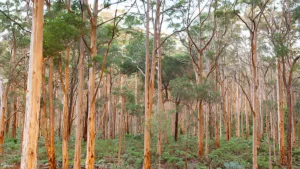

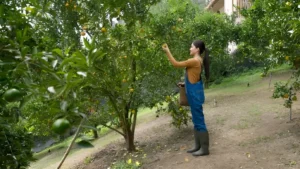
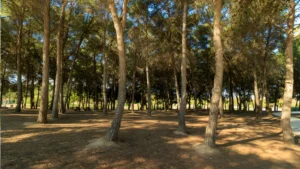

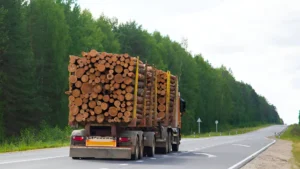
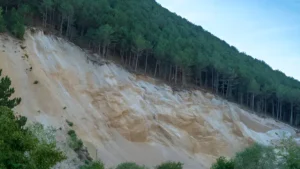
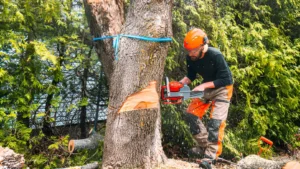
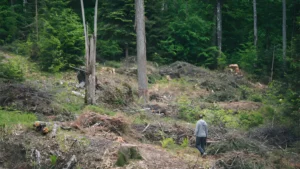

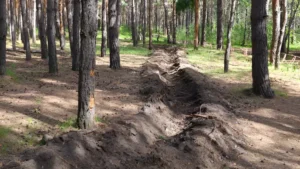

Leave your comment